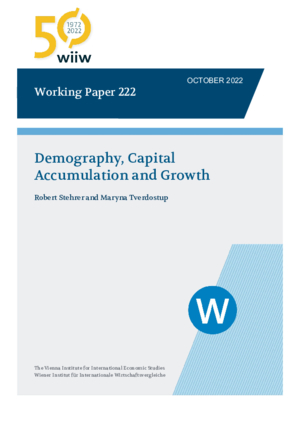Demography, Capital Accumulation and Growth
Robert Stehrer and Maryna Tverdostup
wiiw Working Paper No. 222, October 2022
56 pages including 35 Tables and 9 Figures
Europe will be challenged by demographic changes over the next few decades, even under favourable assumptions about fertility and migration, but the economic effects are not yet fully understood. This paper studies the effects of population ageing on economic growth, capital deepening and robotisation in 27 European Union (EU) labour markets. First, we econometrically assess the effects of ageing and potential labour market shortages on growth. Second, we test the hypothesis of whether ageing leads to faster adoption of new technologies. We distinguish between various capital asset types, including non-ICT and ICT capital, tangible and intangible capital and the adoption of robots. The analysis is based on Eurostat, the European Labour Force Survey (EU-LFS) and International Federation of Robotics (IFR) data. Results indicate that ageing and demographic changes might contribute to secular stagnation, which decelerates the adoption of new technologies.
Keywords: aging, growth, capital accumulation, new technologies, secular stagnation
JEL classification: J11, O33
Countries covered: European Union
Research Areas: Macroeconomic Analysis and Policy
